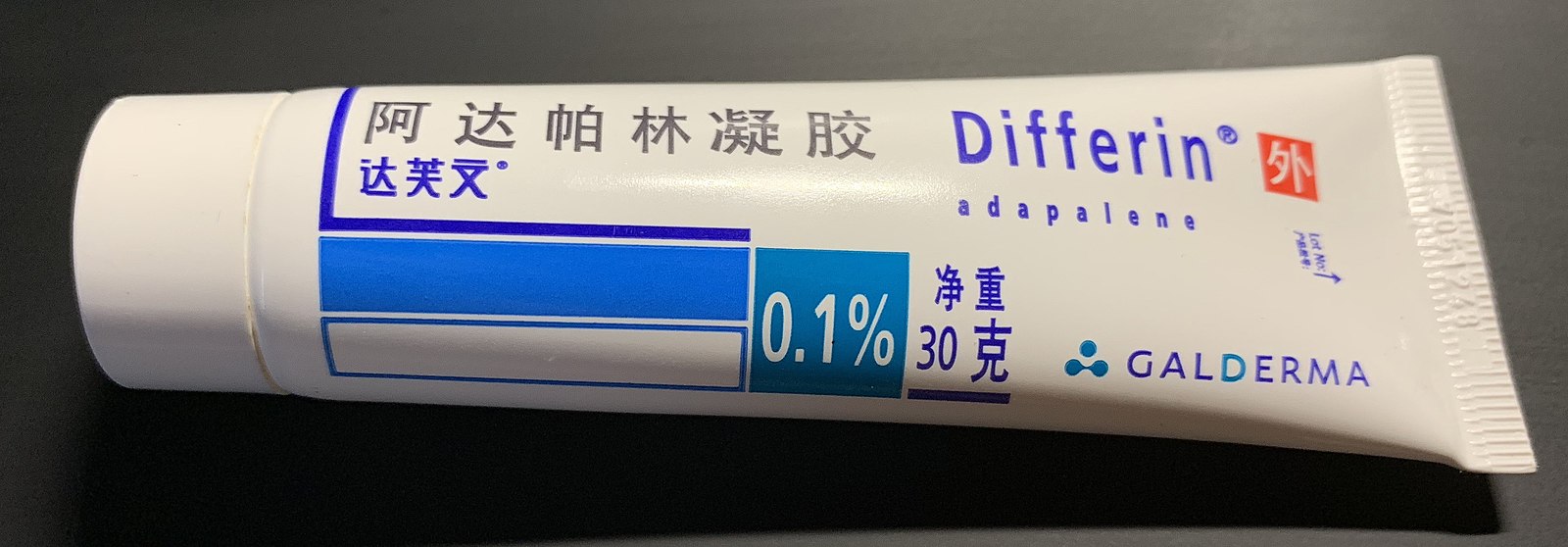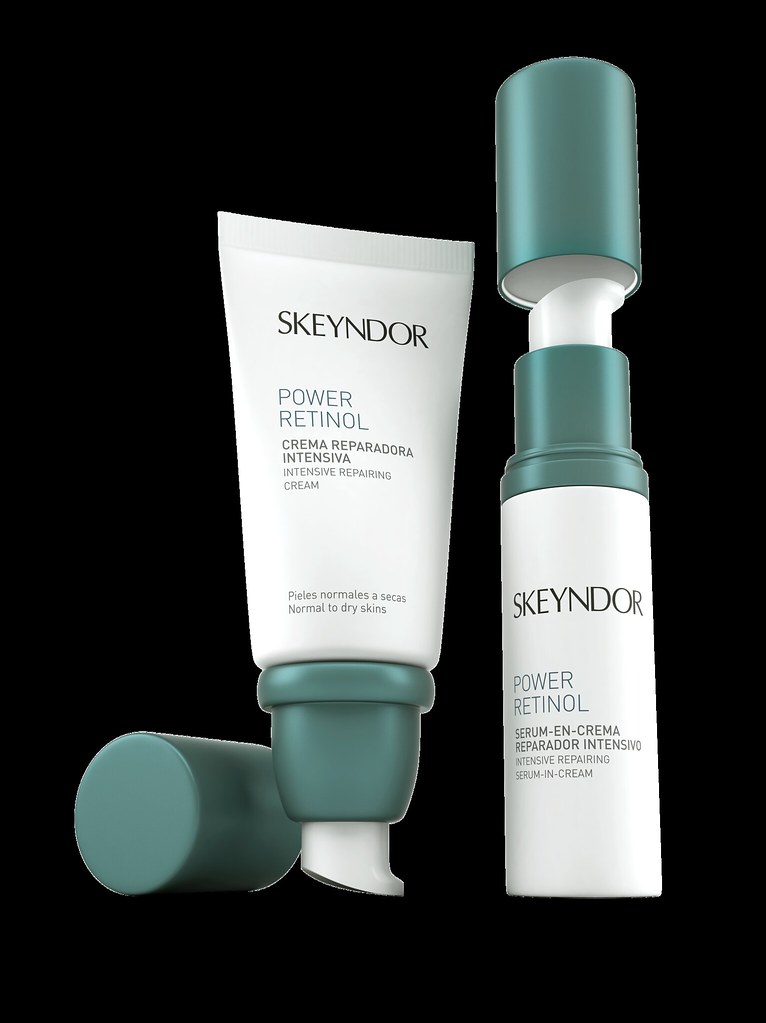Difference Between Adapalene and Retinol
Adapalene is a type of retinoid substance that is used in many skin creams as a treatment for acne. Retinol is the substance known as vitamin A which is important for good functioning of the eye.

What is Adapalene?
Definition:
Adapalene is a retinoid substance that is chemically synthesized and used to treat skin conditions such as acne.
Structure:
Adapalene is a chemical substance that is derived from naphthoic acid through a series of reactions and it has the molecular formula C28H28O3. The adapalene molecule has a weight of 412,52 g/mol.
Uses:
Adapalene affects keratin formation in the skin and it helps stop inflammation and decreases the growth of certain cells; this all helps reduce the incidence of pimples associated with acne. The adapalene is often used at a concentration of 0.1% in gel form. However, when treating acne vulgaris it can also be used at 0.3% concentration in gel form; this concentration has been shown to be more effective than the lower dose but may cause more side effects in people who are hypersensitive. Adapalene is usually sold under the brand name Differin as a topical gel for people with acne. It has also been used to treat the skin problem caused by Darier’s disease.
Formation:
Adapalene is synthesized in the laboratory using various chemicals including naphthoic acid. It is similar to many other retinoid substances, but it is a synthetically manufactured substance. It is easy to confuse with retinol, but it is an artificially formed substance while retinol is formed naturally in the body from precursors and has a different molecular structure.
Disadvantages:
Adapalene is mostly beneficial when used as directed for treating acne swelling and inflammation; however, in rare cases, a person may have an allergic response. Hypersensitive individuals can try a low dose DIfferin or an alternative product if they show an adverse reaction.

What is Retinol?
Definition:
Retinol is the substance commonly called vitamin A and it is an antioxidant that helps the eyes and skin to function properly.
Structure:
Retinol is in the alcohol category of chemicals and its molecular formula is C20H30 and weight is 286, 45 g/mol. The boiling point is 137 oC and melting point is 63oC. Since it is an alcohol, it cannot dissolve in water but is soluble in fats.
Uses:
The body uses retinol and converts it into other forms that can be used by the rods and cones of the eye. These are the photoreceptor cells that let us see images and that join to optic nerve fibers, which send signals to the vision area of the brain.
Formation:
Retinol is produced by enzyme-catalyzed reactions involving carotenoids, provitamin A molecules. To naturally increase retinol formation in your body you can eat more orange and yellow vegetables and fruits which contain carotenoids. While not the same as adapalene, the formation of vitamin A in the body does also help the skin.
Disadvantages:
Both too little and too much retinol is dangerous, with too little affecting vision while too much tending to accumulate in the hepatic cells. If a person is deficient in vitamin A, then they are likely to suffer most from night blindness. Taking supplements of vitamin A can be beneficial but too much can be dangerous because the retinol can accumulate in the liver causing hepatic injury.
Difference between Adapalene and Retinol?
Definition
Adapalene is a retinoid substance made to treat skin problems such as acne. Retinol is the name for the substance we know as vitamin A, which is important for our eyes and skin.
Overall molecular structure
The molecular structure of adapalene is like that of a retinoid and it is derived from naphthoic acid. The molecular structure of retinol is that of an alcohol substance.
Molecular formula
The molecular formula of adapalene is C28H28O3. The molecular formula of retinol is C20H30O.
Molecular weight
Adapalene has a molecular weight of 412,52 g/mol. Retinol has a much lower molecular weight of 286, 45 g/mol.
Uses
Adapalene is used to treat skin problems; specifically it helps treat acne vulgaris by reducing the inflammatory response, and it helps stop too much keratin from being formed; research has also shown it to be useful for treating people with Darier’s disease. Retinol is used in the body by the special cells in the eye, the rods and cones, and it helps the skin to stay healthy.
Formation
The adapalene is manufactured synthetically using various chemicals including naphthoic acid. Retinol is formed via various enzyme-catalyzed reactions using precursors such as carotenoid pigments taken in through the diet.
Table comparing Adapalene and Retinol

Summary of Adapalene Vs. Retinol
- Adapalene and retinol are related in that both have retinoid properties.
- Retinol is important for the proper functioning of the eyes and it also helps the skin to stay healthy.
- Adapalene is a substance that is used to treat acne and other skin conditions and is available in a cream or gel form, which is applied to affected areas.
- Retinol is vitamin A which is formed from carotenoids taken in with the diet.
- Difference Between Rumination and Regurgitation - June 13, 2024
- Difference Between Pyelectasis and Hydronephrosis - June 4, 2024
- Difference Between Cellulitis and Erysipelas - June 1, 2024
Search DifferenceBetween.net :
Leave a Response
References :
[0]Image credit: https://live.staticflickr.com/3955/15028510784_46bac4de0a_b.jpg
[1]Image credit: https://commons.wikimedia.org/wiki/File:Adapalene_Gel_(Differin)_in_China.jpg
[2]Abe, Masatoshi, et al. "Successful treatment of Darier’s disease with adapalene gel." Pediatric dermatology 28.2 (2011): 197-198.
[3]O'Byrne, Sheila M., and William S. Blaner. "Retinol and retinyl esters: Biochemistry and physiology Thematic Review Series: Fat-soluble vitamins: vitamin A." Journal of lipid research 54.7 (2013): 1731-1743.
[4]Piskin, Suleyman, and Erol Uzunali. "A review of the use of adapalene for the treatment of acne vulgaris." Therapeutics and Clinical Risk Management 3.4 (2007): 621.
